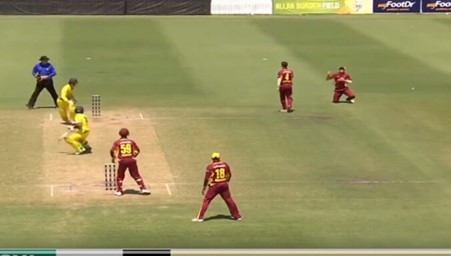When games first started, most of them were very different. Formats and regulations of sports frequently change over time. These changes result from the shift in excitement, demand, safety requirements, and popularity. International cricket is driven by the Marylebone Cricket Club (MCC). Numerous regulations do not make sense at first. Let us look at the most bizarre cricket rules.
1. Fake Fielding
The Law 41.5.1 of the MCC Laws of Cricket addresses this rule, established in 2017. A fielder is not allowed to fake a throw when he is unable to stop a ball, according to the rules. If a fielder commits such an error, the batting team will be penalized by receiving five runs. In addition to the five runs assessed as a penalty, any runs scored by the hitters will also get counted; however, the bowl will be discarded.

2. Three-Meter Rule For LBW
To account for the possibility that technology may not always be entirely accurate, this regulation was adopted. Let us look at an illustration of this law to comprehend it better. A hitter advances to play a shot but it hits on the pad. The fielding team appeals, the umpire renders a decision—out or not—and the dynamic team evaluates it. This rule states that the on-field call will stand, and the team will keep the review if the ball hits the pad more than three meters from the stumps.

3. Bails Do Not Fall
The bails you see on the stumps have a purpose and are not just for decoration. This rule states that even if the ball contacts the stumps after being delivered and the bails are in place, the batter will not be out. Ben Stokes of England ignored a Cameron Green delivery that noisily kissed the off-stump but failed to remove the bails.

4. No Runs Were Awarded For Deliberate Padding
When a leg-spinner bowls a leg break from outside the line, batters purposefully stop the ball with their pads. The rule states that the batter cannot run after purposefully padding the ball. The runs would not count even if the ball flies to the boundary. Leg byes are not the same as this. Only when the hitter attempted a candid shot but missed, and the ball touched his pad, or when the batter dodged the ball, will the umpires permit leg-by runs.

5. Max 2 Fielders Behind Square Leg
A few people know the restriction that only two fielders can remain in the little space between the square leg and long stop positions (the area marked red in the image). This rule was put in place to protect batters from the now-illegal bodyline deliveries, which can hit the batter in the upper body and cause a mistimed shot as the hitter tries to avoid getting hit.

6. The Shadow Rule
According to this regulation, a fielder is not allowed to move until the batter plays the ball or the ball does not reach the batter if he casts a shadow on the field. A batter must maintain extreme concentration when confronting the pitch. The unfair interruption for the hitter when focusing on the ball is eliminated by this rule.

7. Penalty For Deliberate Short-Run
A short run occurs when either of the hitters does not ground his bat inside the popping crease before going for the subsequent run after taking a run. According to MCC Law 18.3, the umpire, in such a case, proclaims a short run, awards the run, and selects the striker for the subsequent ball. This regulation is not followed by players who desire a better batter. All runs scored on that ball will not count if the umpires believe the hitters intentionally took a short run, and the other side will receive a penalty run total of five runs.

8. Penalty For Hitting Equipment
According to Law 28.3.2, the ball shall become dead, the batting team shall receive five penalty runs, and the runs scored before the ball strikes the helmet will get counted. If the ball hits the helmet or any other external equipment (keeping gloves, sunglasses) of the fielding side kept on the ground, the ball shall become dead.

9. Fielder Can Not Wear Protective Gear
Why the fielders in silly-point and short-leg wear their leg protectors inside their pants may have baffled you at one point. It is a result of this rule. No fielder other than the wicketkeeper can use gloves or external leg protection, according to Law 28.1. Only with the umpire's permission may the hand or finger protection be worn. Queensland's Matt Renshaw donned the goalkeeper's gloves during a Sheffield Shield game against Western Australia to catch a throw.

10. Timed Out
By Law 40, the batter should get ready to face the following ball within three minutes of the last wicket, if the fielding team appeals. Failing to do so could result in him getting a time-out. India's Sachin Tendulkar batted in a test match against South Africa when he had to leave the field for 18 minutes. Six minutes later, Saurav Ganguly started his at-bat. Tendulkar might have gotten disqualified if South Africa had appealed.







